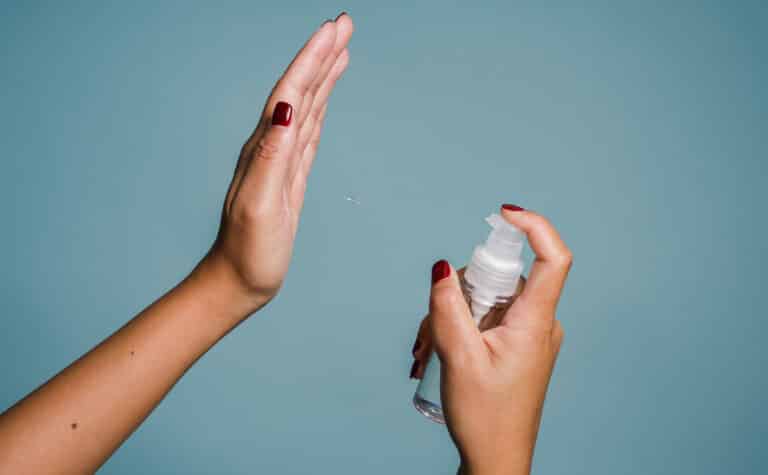TikTokers are now using lube as a makeup primer. Does it work?

Just when we all thought makeup hacks had taken a hit over the COVID-19 pandemic, TikTok MUAs have ditched primer for lube. Yes, you read that right, #lubeprimer is trending. I wish I was making this up. But if you’re a gullible soul like me in a life-long search for the perfect makeup base, chances are that you would’ve spotted the bizarre trend on your FYP earlier this week.
Let’s face it, skincare is sacred, and facial primer is a staple. The product is primarily used to create a smooth base for flawless application of the rest that follow. Don’t want your $50 foundation wiping off after an hour? Primer is your best friend. Scared of your makeup melting with the impending climate change? Primer has got you covered. In short, you can’t construct an iconic building on a weak foundation. Beauty brands are obviously aware of this fact and have, therefore, come up with many products to choose from—including Milk’s Makeup Hydro Grip, The Ordinary’s High-Spreadability Fluid Primer, and Supergoop!’s Glowscreen SPF 30, to name a few.
Since gen Z TikTokers have knocked primer off its pedestal and swapped it in for the sexy-time substance, does it really work? Is lube honestly a tried and true product for a glowing, dewy face? Heck, is it even safe? Well, the answer to those questions might surprise you—spoiler alert: yes, it works and it works well!
@lukeketuhok This tutorial has a secret message for the haters👀💋 #lubeprimer #fyp #gay #makeuptipstiktok #boburnham #alleyesonme #makeuptutorial #makeup
♬ All Eyes On Me - Bo Burnham
Beauty influencers have long surprised us all when it comes to innovative—to put it nicely—ways they come up with to do makeup. From tech-savvy steps to shave time off your routine on the go to ‘cursed’ fashion fads and borderline-deadly viral beauty trends, we’ve seen it all. But lube primers are gaining traction faster than their ancestors. Over the past week, tons of TikTok beauty influencers have taken to their handy-helpers to achieve a flawless face. With videos amassing millions of views from creators like Sean Anthony, who admitted that the substitute gave his skin a radiant “glow” and sought-after “grippy” texture which helped with applying foundation. The new method has even birthed some crazy ideas in creators who are now on a quest to test its wearability under different conditions. In a viral TikTok tutorial, Anthony himself proved how the hack works better when mixed with foundation.
But even if coveted makeup artists like Huda Kattan have latched onto this trend, does that mean it’s safe for us normies too? Several influencers seem to think so, but what about specialists and the people who really understand all that ingredient mumbo-jumbo in the back of makeup products? Well, according to some experts, it might not be the best option to substitute your primer for. Despite its popularity, Doctor Robert Finney, a board-certified cosmetic dermatologist at Entière Dermatology, does not give the green light for the real-time application of the trend. And he’s not the only specialist who has chimed in with their professional recommendations.
“There are plenty of good primer options designed specifically with your face in mind,” Doctor Finney said in an interview with NYLON. He further explained that lubes, such as the Play 2-in-1 produced by Durex, have Castor oil in them which can clog pores and lead to breakouts. “While not everyone is breakout-prone and may tolerate this just fine, I still wouldn’t recommend it,” he added. Finney also mentioned potential dangers of fragrant lubes which can stimulate allergic reactions on your skin before anything else. Though not everyone is affected by these irritants, you sadly won’t know unless you try it. This is not me encouraging you to give it a go either. All I’m saying is that it’s better to be safe than sorry!
@drcharlesmd1 ♬ Lube - Chris Locke
Generally speaking, it seems perfectly fine to switch from normal primer to lube. After all, the latter is ultimately used on your skin, right? Certified skin specialist and SkinTok guru Hyram Yarbo—who was wary of the trend at first—broke down some of the common components in lube: propylene glycol, hydroxyethylcellulose, benzoic acid and sodium hydroxide. According to Yarbo, all of these are regular ingredients found in most skincare products. Yet, he was surprised. “If they’re going to be shoved up there where the sun doesn’t shine then the ingredients probably aren’t too shabby,” he noted. Sounds…lovely. The skin expert has also made videos discussing the craze and stamps his approval on the novel idea.
So, it’s safe to say that lube is definitely an option for switching up your makeup routine—with caution. Not the best, but certainly not the worst we’ve seen. But, for real, who would’ve woken up one day and thought of smearing lube underneath their makeup?




